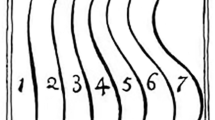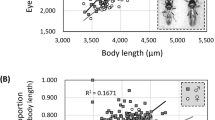Abstract
DARWIN1 suggested that many apparently deleterious secondary sexual characters in males, such as bright colours, elaborate ornaments and conspicuous displays, evolved as a result of female choice. Darwin never tried to explain the crucial agent of selection, that females have preferences for exaggerated male traits. Rather, he took it for granted that females of many species possess a 'sense of the beautiful', akin to the aesthetic sense in humans. The question of why such preferences evolve remains a controversial issue2,3. Here we report that mechanisms concerned with signal recognition possess inevitable biases in response that act as important agents of selection on signal form. The existence of such biases may be sufficient to explain the evolution of exaggerated male secondary sexual traits, and elaborate signals in general.
This is a preview of subscription content, access via your institution
Access options
Subscribe to this journal
Receive 51 print issues and online access
$199.00 per year
only $3.90 per issue
Buy this article
- Purchase on Springer Link
- Instant access to full article PDF
Prices may be subject to local taxes which are calculated during checkout
Similar content being viewed by others
References
Darwin, C. The Descent of Man and Selection in Relation to Sex (Murray, London, 1871).
Kirkpatrick, M. & Ryan, M. J. Nature 350, 33–38 (1991).
Maynard Smith, J. Trends Ecol. Evol. 6, 146–151 (1991).
Caudill, M. & Butler, C. Naturally Intelligent Systems (MIT Press, Cambridge, 1990).
Eberhart, R. C. & Dobbins, R. W. Neural Network PC Tools (Academic, San Diego, 1990).
Tinbergen, N. Wilson Bull. 60, 6–52 (1948).
Spence, K. W. Psychol. Rev. 44, 430–444 (1937).
Basolo, A. L. Science 250, 808–810 (1990).
Basolo, A. L. Science 253, 1426–1427 (1991).
Ryan, M. J., Fox, R. C., Wilczynski, W. & Rand, A. S. Nature 343, 66–67 (1990).
Ryan, M. J. Oxf. Surv. evol. Biol. 7, 156–195 (1991).
Lande, R. Proc. natn. Acad. Sci. U.S.A. 78, 3721–3725 (1981).
Huxley, J. S. Phil. Trans. R. Soc. B251, 249–271 (1966).
Author information
Authors and Affiliations
Rights and permissions
About this article
Cite this article
Enquist, M., Arak, A. Selection of exaggerated male traits by female aesthetic senses. Nature 361, 446–448 (1993). https://doi.org/10.1038/361446a0
Received:
Accepted:
Issue Date:
DOI: https://doi.org/10.1038/361446a0
This article is cited by
-
Female preference for male lateral projection area in Poecilia reticulata
Environmental Biology of Fishes (2012)
-
Female and male serins (Serinus serinus) respond differently to derived song traits
Behavioral Ecology and Sociobiology (2007)
-
Gesichtsästhetik Teil 1: Die Bedeutung der Symmetrieebene des Gesichts
Mund-, Kiefer- und Gesichtschirurgie (2007)
-
Gesichtsästhetik Teil 2: Auswirkung symmetrischer und asymmetrischer Veränderungen der Orbitaregion
Mund-, Kiefer- und Gesichtschirurgie (2007)
-
Evolution of condition‐dependent dispersal: A genetic‐algorithm search for the ESS reaction norm
Population Ecology (1997)
Comments
By submitting a comment you agree to abide by our Terms and Community Guidelines. If you find something abusive or that does not comply with our terms or guidelines please flag it as inappropriate.



